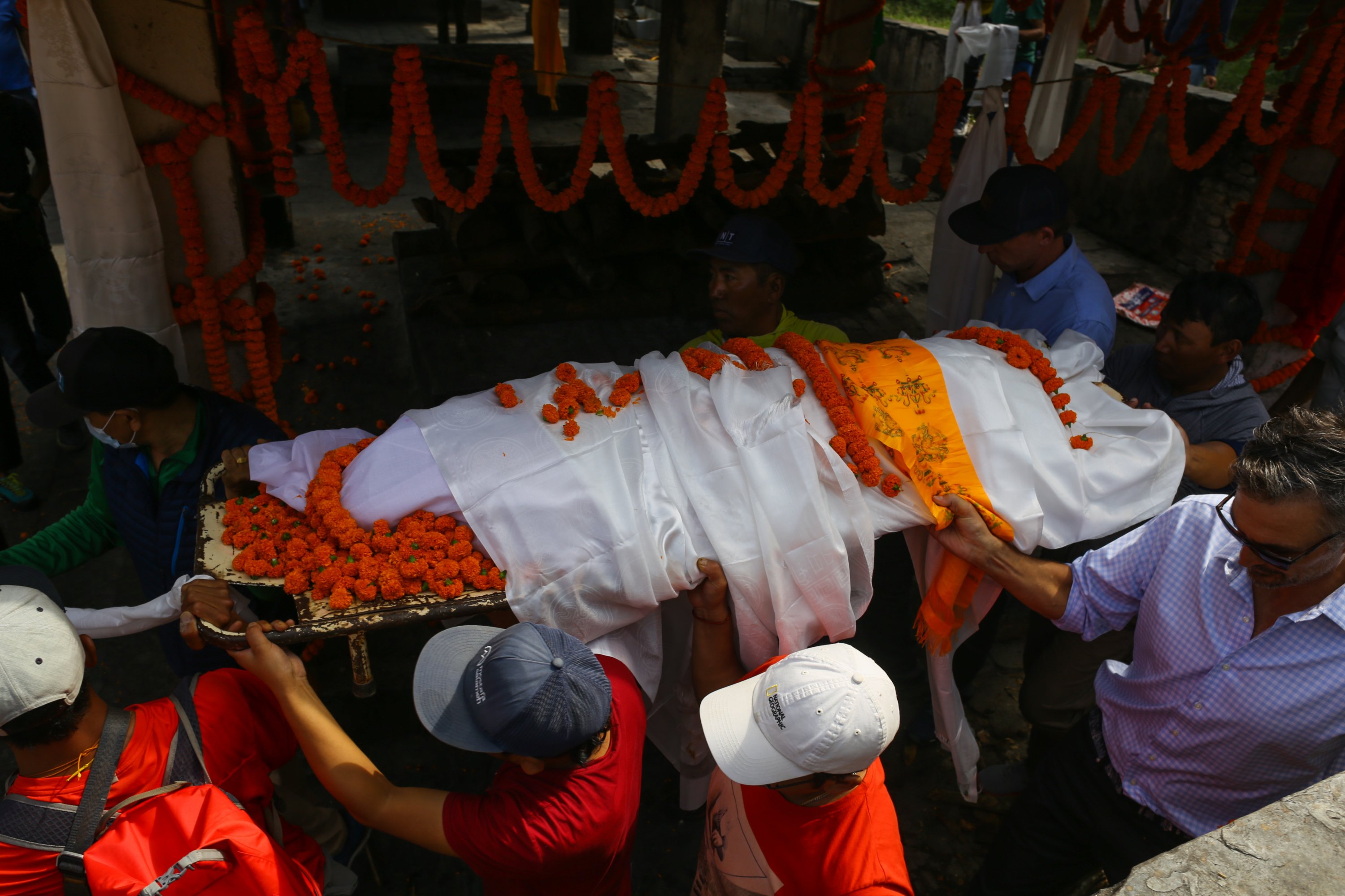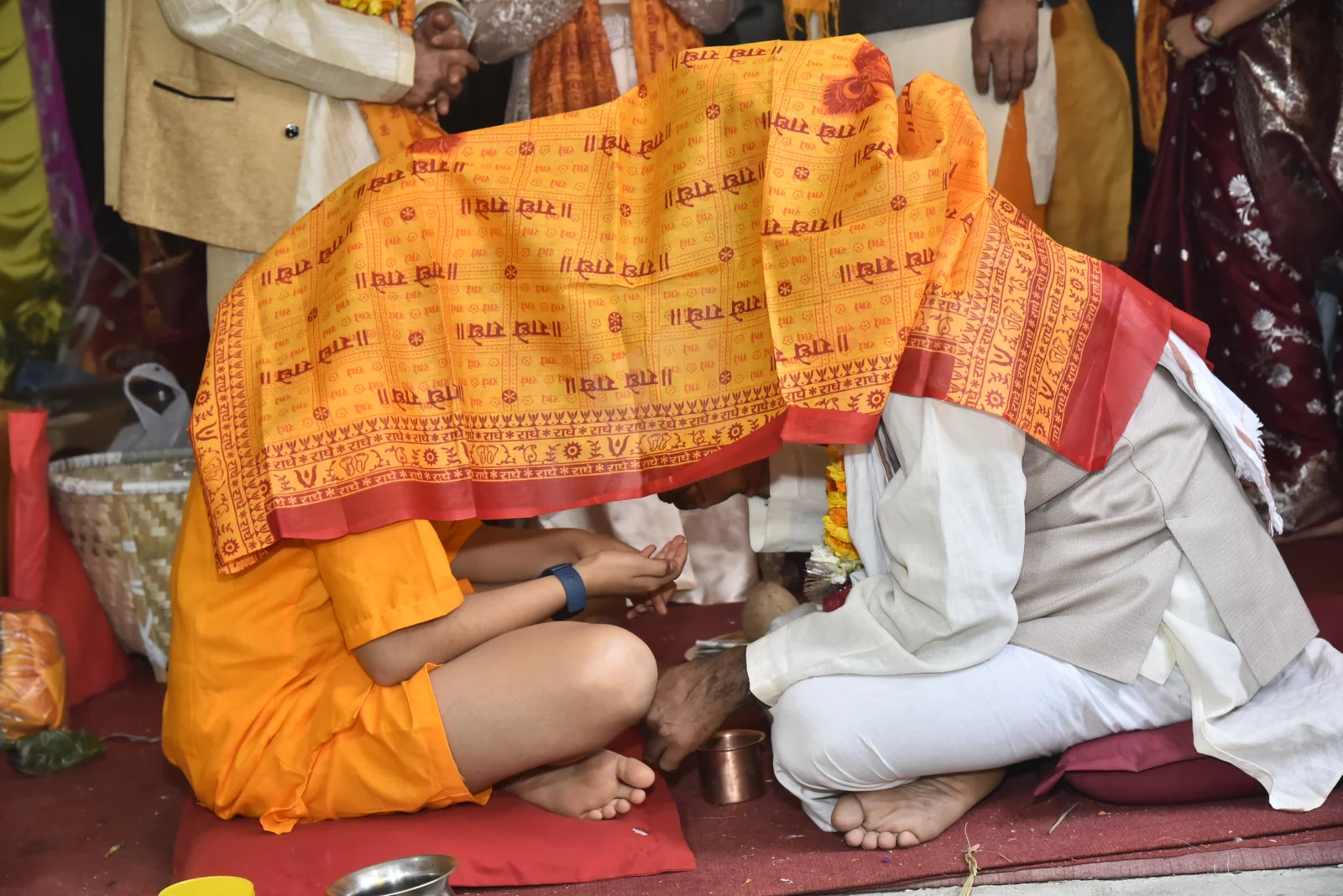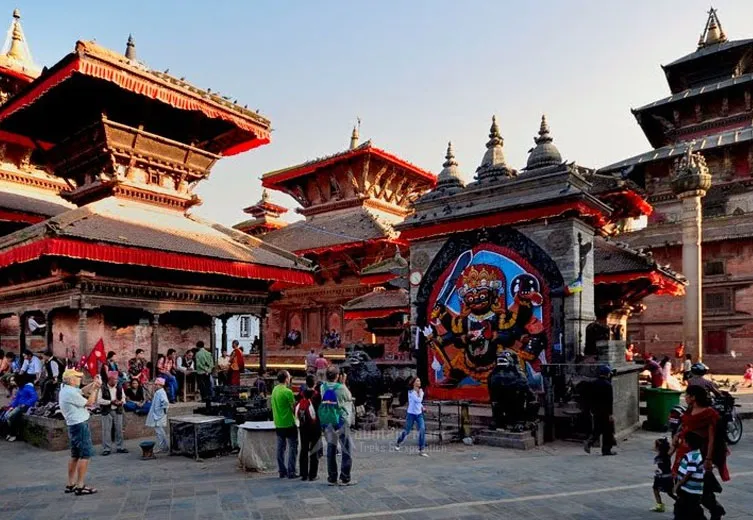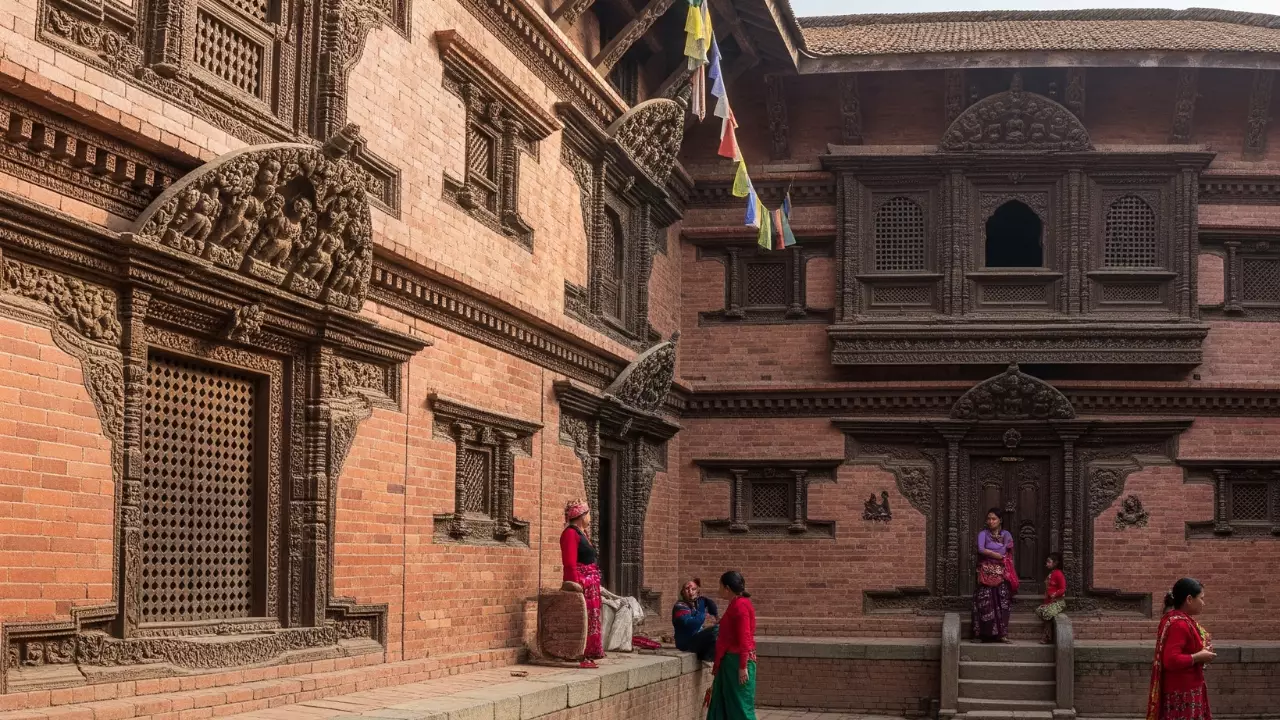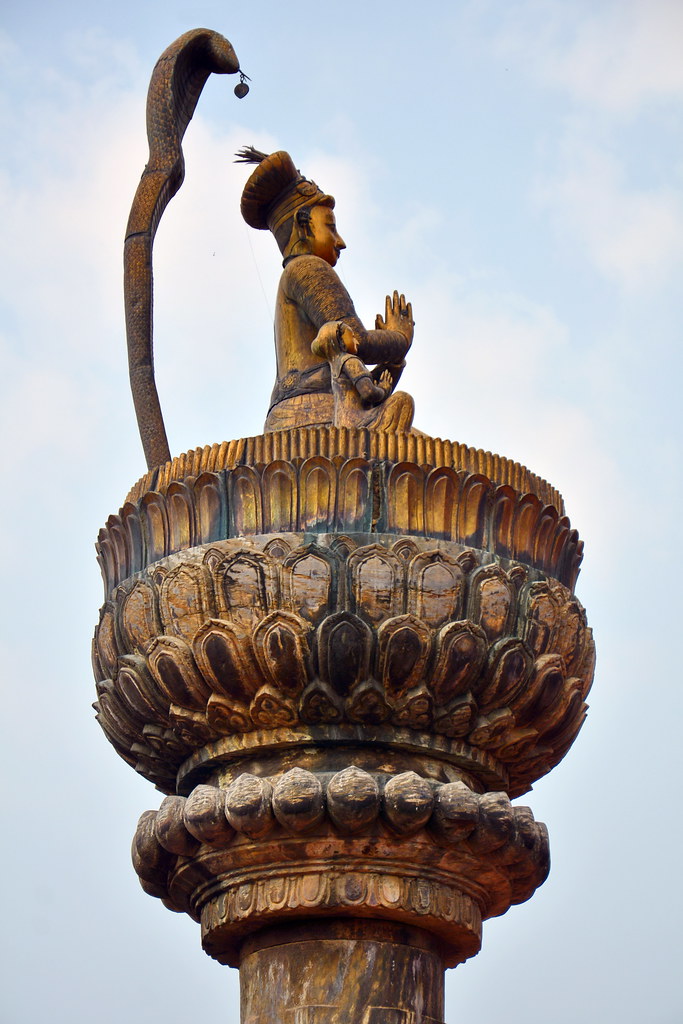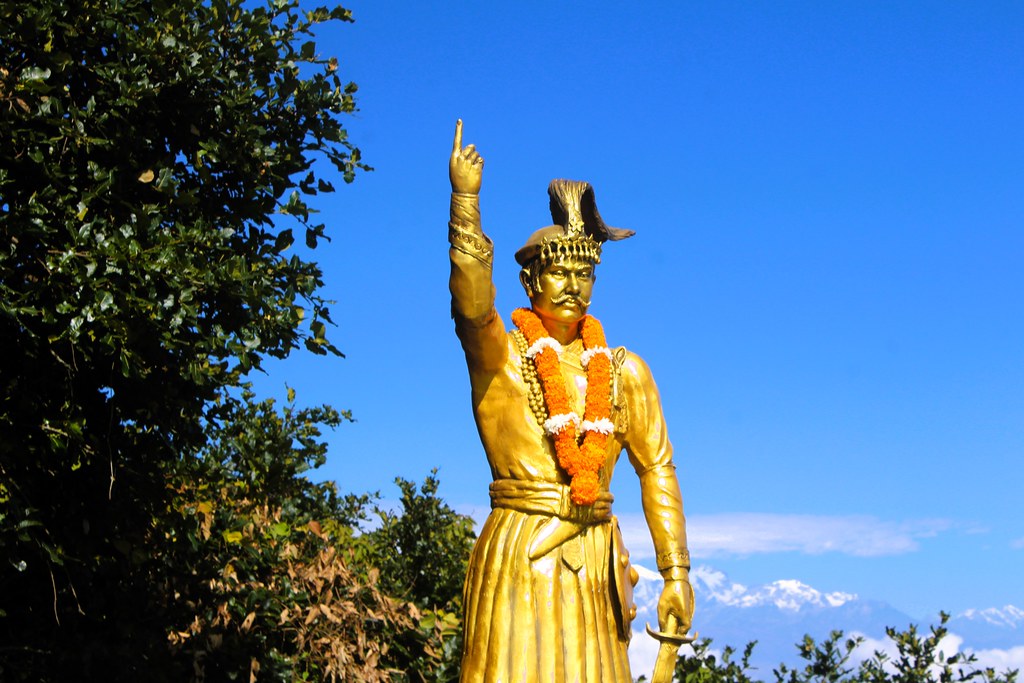Share this Article
Introduction: Temples as the Soul of Nepali Civilization
The story of Nepal cannot be told without its temples. From the ancient courtyards of the Kathmandu Valley to the remote highlands where solitary shrines stand against the backdrop of snowcapped mountains, temples form the heart of Nepali cultural, spiritual, and artistic identity. Unlike in many parts of the world where religious structures are isolated monuments, temples in Nepal are woven into the fabric of daily life. They are not only places for prayer but also spaces where art, architecture, music, festivals, and social gatherings converge. Every bell that rings at dawn in a neighborhood shrine, every butter lamp lit in devotion, and every festival procession that winds through temple squares reveals how deeply temples are interlaced with the pulse of Nepali society.
To call temples simply “religious buildings” would be to miss their deeper essence. They are sacred landscapes where myths take physical form, where gods and humans interact, and where centuries of history are preserved in wood, stone, and metal. They serve as markers of time, chronicling dynasties, disasters, and revivals. They are also living institutions, evolving with the community while carrying forward traditions that stretch back more than a millennium. For the Nepali people, the temple is not a distant holy site but a familiar presence—a guardian of faith, an inspiration for art, and a sanctuary of continuity in an ever-changing world.
The Origins of Temple Culture: Foundations in Faith and Geography
The roots of temple culture in Nepal can be traced to the deep spiritual traditions of Hinduism and Buddhism, both of which have shaped the region for centuries. The unique geography of Nepal, cradled between India and Tibet, fostered the exchange of ideas, artistic styles, and spiritual practices. Hinduism introduced a pantheon of gods and goddesses, each with their own temples, rituals, and festivals, while Buddhism contributed stupas, chaityas, and monasteries that dotted the sacred landscape. Instead of remaining separate, these two traditions blended into a harmonious whole, giving birth to a uniquely Nepali temple culture where Shiva and Buddha could coexist within the same sacred space.
The earliest evidence of religious shrines in Nepal predates the Licchavi dynasty (4th–9th century CE), when small stone lingams (symbols of Lord Shiva) and stupas were worshipped in open spaces. Over time, as communities grew more organized, permanent temples were constructed to house deities, creating spaces where both daily worship and community gatherings could take place. The development of temples was not only a spiritual need but also a cultural expression. As kings and patrons sought to legitimize their rule, they invested heavily in constructing temples that displayed both devotion to the gods and power to the people.
The Licchavi Period: The Dawn of Temple Building
The Licchavi dynasty, which ruled Nepal from the 4th to the 9th century, is widely considered the dawn of organized temple culture. Inscriptions from this era, carved into stone slabs and temple walls, record the construction of shrines and the donation of land for religious purposes. One of the most important aspects of Licchavi temples was their simplicity and durability. They were often made of stone and brick, with modest but meaningful decorations. Although many structures from this time have not survived intact, remnants of shrines, sculptures, and inscriptions provide crucial insight into the religious and artistic practices of early Nepal.
Hindu temples dedicated to Shiva and Vishnu became prominent during the Licchavi period. The Changu Narayan Temple, believed to have been first built in the 4th century and later rebuilt, stands as one of the oldest temples in Nepal still in use today. Dedicated to Lord Vishnu, Changu Narayan contains intricate stone carvings from the Licchavi era, including depictions of Vishnu in his various avatars. These carvings are among the earliest examples of Nepali religious art and mark the beginning of a tradition where temples became both centers of worship and repositories of artistic excellence.
Buddhism also flourished during this period, with the construction and restoration of stupas such as Swayambhunath, also known as the Monkey Temple, which is believed to date back more than 1,500 years. These stupas became focal points of devotion for Buddhists while also being revered by Hindus. The coexistence of temples and stupas during the Licchavi era laid the foundation for the religious syncretism that continues to define Nepali spirituality today.
The Medieval Period: The Rise of Temple Grandeur
Following the Licchavis, the medieval period—especially under the Malla dynasty (12th to 18th century)—witnessed a golden age of temple construction. Kings of Kathmandu, Patan, and Bhaktapur competed to outshine each other in devotion and grandeur by building temples that were not only larger but also more artistically elaborate. This was the era when the distinctive multi-tiered pagoda style of temple architecture reached its peak. Temples such as the Nyatapola in Bhaktapur, with its towering five stories, and countless others across the valley exemplify the bold ambition and craftsmanship of this period.
The Malla kings saw temples as symbols of divine favor and political legitimacy. Each major temple was strategically placed at the center of palace squares, surrounded by courtyards, rest houses, and smaller shrines. These temples were not isolated sanctuaries but part of an urban design where religion, governance, and community life intertwined. Temples also became stages for festivals, dances, and processions, making them integral to the cultural life of the people.
One of the remarkable aspects of the Malla period was the increasing integration of art into temple structures. Wooden struts supporting temple roofs were carved with images of gods, goddesses, and mythical creatures. Metal statues adorned sanctuaries, while frescoes and paubha paintings decorated temple walls. These artistic details were not mere embellishments but were considered essential to the spiritual power of the temple. The temple, therefore, became both a divine dwelling and a masterpiece of human creativity.
The Temple as a Living Institution
From their earliest forms as stone shrines to the grandeur of medieval pagodas, temples in Nepal have always been more than static monuments. They are living institutions, constantly renewed through rituals, festivals, and reconstructions. When a temple is damaged, as happened during earthquakes throughout history, it is rebuilt not only to restore its physical structure but also to reaffirm the continuity of faith and culture. The cycle of construction, destruction, and reconstruction demonstrates the resilience of temple culture in Nepal, which has survived centuries of change and upheaval.
Temples have also adapted to the needs of the community over time. What began as royal patronage expanded into collective responsibility, with local residents taking pride in maintaining their neighborhood shrines. This shared sense of ownership has ensured that temples remain vibrant even when royal dynasties fell. The temple is thus not just a relic of the past but an evolving space that continues to embody the hopes, fears, and aspirations of the Nepali people.
The Kathmandu Valley and Architectural Styles of Temples
The Kathmandu Valley: A Cradle of Sacred Art and Architecture
The Kathmandu Valley, nestled among the foothills of the Himalayas, has long been regarded as the cultural and spiritual heart of Nepal. Surrounded by mountains yet connected through ancient trade routes, the valley became a melting pot of ideas, traditions, and artistic influences. Hinduism and Buddhism flourished side by side, and temples, stupas, and monasteries proliferated in every corner of the valley. Unlike many parts of the world where sacred architecture is confined to specific religious precincts, in Kathmandu the entire landscape is infused with temples. Courtyards, crossroads, palace squares, and even residential lanes are adorned with shrines and deities. This integration of sacred spaces into daily life makes the valley not just a geographic region but a living sacred mandala, where spirituality permeates the social, cultural, and artistic spheres.
The valley is home to seven UNESCO World Heritage Sites, most of them centered on temple complexes: Kathmandu Durbar Square, Patan Durbar Square, Bhaktapur Durbar Square, Pashupatinath, Swayambhunath, Boudhanath, and Changu Narayan. These sites are not only historic landmarks but also vibrant centers of living traditions. Every morning, devotees throng to offer puja, every festival season fills the courtyards with music and dance, and every evening bells and lamps awaken the temple precincts. To walk through the valley is to witness the coexistence of past and present, where ancient artistry continues to shape contemporary spirituality.
Pashupatinath: The Sacred Abode of Lord Shiva
Perhaps the most renowned temple in Nepal is Pashupatinath, dedicated to Lord Shiva, revered here as the protector of animals and the supreme lord of creation and destruction. Situated on the banks of the holy Bagmati River, Pashupatinath is one of the most important pilgrimage sites for Hindus worldwide, often compared to India’s Kashi Vishwanath. The temple complex is vast, consisting of the main pagoda-style sanctuary with its gilded roof, surrounded by numerous smaller shrines and ghats where cremations take place.
Pashupatinath exemplifies the way temples in Nepal function not only as spaces for prayer but also as stages for life and death. While devotees perform rituals to seek blessings, families gather to cremate loved ones along the river, reinforcing the cycle of existence in the shadow of divinity. The temple thus embodies both transcendence and impermanence, offering spiritual refuge in the midst of human suffering. Architecturally, Pashupatinath reflects the Nepali pagoda tradition at its finest, with its elaborately carved wooden struts, golden pinnacle, and richly ornamented doors that symbolize thresholds to the divine.
Changu Narayan: The Oldest Living Temple
Another jewel of the valley is Changu Narayan, perched on a hilltop east of Kathmandu. Considered the oldest continuously functioning Hindu temple in Nepal, its origins date back to the Licchavi period. Dedicated to Lord Vishnu in his incarnation as Narayan, the temple is famous for its stone inscriptions and sculptures that provide some of the earliest evidence of organized temple culture in the region.
The artistry at Changu Narayan is remarkable. Stone panels depict Vishnu in various forms—such as Vishvarupa, the cosmic form encompassing all creation, and Narasimha, the half-man, half-lion incarnation. These works are not merely decorative but serve as theological lessons, narrating the stories of divine intervention in human history. The temple’s setting, surrounded by villages and terraced fields, reflects the integration of sacred and rural life, showing that temples were never isolated monuments but part of community ecosystems.
Swayambhunath and Boudhanath: The Buddhist Contribution
While Pashupatinath and Changu Narayan represent Hindu devotion, the valley is equally renowned for its Buddhist stupas, the most famous being Swayambhunath and Boudhanath. Swayambhunath, perched atop a hill west of Kathmandu, is a majestic stupa crowned with the all-seeing eyes of the Buddha. Known as the “Monkey Temple,” it is revered by both Buddhists and Hindus. Legend holds that the valley was once a lake, and a lotus flower bloomed at its center. When the water was drained, the lotus settled on the hill where Swayambhunath now stands. This myth reinforces the idea that the Kathmandu Valley itself is a sacred landscape shaped by divine intervention.
Boudhanath, located on the eastern edge of Kathmandu, is one of the largest stupas in the world. Its massive white dome, surmounted by a golden spire and painted eyes, radiates serenity and cosmic order. For Tibetan Buddhists, Boudhanath is one of the holiest pilgrimage sites outside Tibet, drawing monks, nuns, and lay devotees who circumambulate the stupa while spinning prayer wheels and chanting mantras. The stupa’s architecture, with its layered base and geometric precision, represents the Buddhist cosmos and the path to enlightenment. Together, Swayambhunath and Boudhanath highlight the Buddhist dimension of Nepali temple culture, showing how stupas and chaityas complement the Hindu temple tradition.
Bhaktapur, Patan, and Kathmandu Durbar Squares: The Malla Legacy
The medieval city-states of Bhaktapur, Patan, and Kathmandu, ruled by the Malla kings, created some of the most extraordinary temple complexes in South Asia. Each city has a Durbar Square, where palaces, temples, and courtyards form a grand ensemble of sacred and civic architecture.
In Bhaktapur Durbar Square, the towering Nyatapola Temple dominates the skyline. Built in the early 18th century, it is the tallest pagoda-style temple in Nepal, dedicated to the goddess Siddhi Lakshmi. The temple’s five levels symbolize the five elements, and the stairway is guarded by stone figures of wrestlers, elephants, lions, griffins, and goddesses—each tier representing increasing strength and protection.
In Patan Durbar Square, the Krishna Mandir stands out with its Shikhara-style stone architecture, a rare departure from the wooden pagoda style. Built in the 17th century, it is decorated with friezes depicting scenes from the Mahabharata and Ramayana, illustrating how temples doubled as visual scriptures for devotees. The square also contains the Hiranya Varna Mahavihar (Golden Temple), a Buddhist monastery adorned with intricate gilded metalwork, showcasing the coexistence of Hindu and Buddhist artistry.
In Kathmandu Durbar Square, the Taleju Bhawani Temple, dedicated to the tutelary goddess of the Malla kings, reflects the intertwining of religion and kingship. Accessible only to Hindus, the temple was regarded as the spiritual protector of the dynasty. Festivals like Indra Jatra, with chariot processions of the living goddess Kumari, still animate the square, ensuring that the temple culture remains a dynamic tradition rather than a relic of the past.
Architectural Styles of Temples in Nepal
The valley’s temples exhibit a remarkable diversity of architectural forms, each with its own symbolic significance and cultural origins. The pagoda style, perfected in Nepal, is perhaps the most iconic. Characterized by its multi-tiered roofs with wide eaves, carved wooden struts, and a tapering profile, the pagoda symbolizes a sacred mountain linking heaven and earth. This style, later transmitted to Tibet, China, and Japan, shows Nepal’s influence on Asian architecture.
The Shikhara style, borrowed from northern India, features a tall, curvilinear spire rising above the sanctum. Unlike the wooden pagoda, Shikhara temples are often built of stone, emphasizing verticality and permanence. The Krishna Mandir in Patan is the finest example of this form in Nepal.
The stupa, distinctively Buddhist, is a dome-shaped structure representing the enlightened mind of the Buddha. Its geometric design follows sacred cosmology: the square base symbolizes the earth, the dome represents water, the spire symbolizes fire, the parasol stands for air, and the pinnacle represents space. Together, these elements depict the path to spiritual awakening.
Smaller forms like chaityas (mini-stupas) and shilas (sacred stones or lingams) demonstrate how sacred architecture permeates even the smallest neighborhoods. Every courtyard in the Kathmandu Valley seems to have a chaitya or shrine, ensuring that divine presence is woven into the daily rhythm of life.
Synthesis of Styles: A Unique Nepali Aesthetic
What makes Nepali temple architecture extraordinary is the synthesis of styles rather than strict adherence to one form. A single temple complex may feature a pagoda alongside a Shikhara shrine, with chaityas dotting the courtyards and toranas (ornamental arches) crowning the entrances. This blending reflects the syncretic nature of Nepali spirituality, where Hindu and Buddhist traditions intermingle seamlessly. It also demonstrates the creativity of Newar artisans, who developed techniques in woodcarving, metalwork, and stone sculpture that gave temples their distinctive character. The result is a sacred aesthetic that is unmistakably Nepali—intimate, intricate, and deeply symbolic.
Symbolism, Daily Worship, and Ritual Life in Temples
The Temple as a Cosmic Symbol
A Nepali temple is never just a building of wood, brick, or stone; it is a cosmic diagram, a physical manifestation of sacred order. Every line, every carving, and every spatial arrangement carries symbolic meaning. The base of a temple represents the earthly plane where human life unfolds, the middle section embodies the intermediate realm of spiritual striving, and the pinnacle points toward liberation or union with the divine. The upward movement of a temple, from broad foundations to slender finials, mirrors the journey of the soul from worldly existence to transcendence.
Underlying most temples is the mandala, a sacred geometric diagram representing the universe. The mandala governs not only the proportions of the temple but also its orientation, entrances, and sanctum placement. In Hindu temples, the sanctum (garbhagriha) symbolizes the womb of the universe, where the divine resides in concentrated form. In Buddhist stupas, the mandala structure maps the cosmos, guiding devotees in their meditative journey toward enlightenment. To enter a temple, therefore, is to enter the universe in miniature, a space where humans commune with the gods in harmony with cosmic law.
Sacred Imagery and Symbolic Ornamentation
Temples in Nepal are adorned with layers of symbolic imagery that serve both protective and didactic purposes. Wooden struts often depict gods, goddesses, guardians, and mythical creatures. Erotic carvings, sometimes surprising to outsiders, symbolize fertility, the cycle of life, and the union of opposites, reminding devotees of the balance between spiritual and worldly existence. The torana, or ornamental arch placed above temple doors, usually depicts protective deities such as Garuda, Naga, or Ganesha, who guard the threshold between the profane and the sacred.
At Pashupatinath, the iconic bull Nandi faces the sanctum of Lord Shiva, representing loyalty and devotion. At Buddhist stupas, the all-seeing eyes of the Buddha gaze in the four cardinal directions, symbolizing omniscience and compassion. Even small details such as the placement of bells, oil lamps, and water vessels carry symbolic weight. Every artistic element is not only an object of beauty but also a tool for spiritual reflection, teaching lessons through visual language.
The Role of Sound, Light, and Fragrance
Temple culture in Nepal engages not only the eye but all the senses. The ringing of bells marks a devotee’s arrival, signaling attention to the divine. Drums, conches, and cymbals accompany rituals, their sounds believed to ward off negativity and awaken spiritual consciousness. The flickering of oil lamps represents the victory of light over darkness, knowledge over ignorance, while incense fills the air with fragrance that purifies both space and mind.
During morning rituals, temples come alive with a symphony of sensory experiences: the rhythmic chanting of mantras, the glowing butter lamps placed before deities, and the scent of flowers and sandalwood. These elements create a sacred atmosphere that transforms the temple into a microcosm of divine presence, enveloping devotees in an immersive spiritual environment.
Daily Worship in Hindu Temples
In Hindu temples, daily worship, or nitya puja, is essential to maintaining the sanctity of the deity. Priests, usually from hereditary Brahmin lineages, perform morning and evening rituals that include bathing the deity’s image, offering fresh flowers, adorning it with clothes and ornaments, and presenting food offerings such as fruits, sweets, or cooked rice. Each action carries symbolic meaning: bathing purifies the deity, clothing signifies dignity, and food represents the sustenance of life shared with the divine.
For devotees, participation in daily worship may be as simple as lighting a lamp, ringing a bell, and offering a handful of flowers while reciting prayers. Some temples, such as Pashupatinath, have elaborate aarti ceremonies where lamps are waved before the deity amidst chanting and music, drawing large crowds of worshippers. In neighborhood shrines, rituals are more modest, yet no less meaningful. These daily acts of devotion create a rhythm of life where the divine is continually honored and remembered.
Rituals in Buddhist Stupas and Monasteries
In Buddhist stupas and monasteries, rituals emphasize circumambulation and meditation. Devotees walk clockwise around stupas such as Swayambhunath or Boudhanath, spinning prayer wheels inscribed with mantras. Each rotation of a wheel is believed to release the power of thousands of prayers, magnifying spiritual merit. Butter lamps are offered to symbolize wisdom and compassion, while prayer flags flutter in the wind, carrying blessings across the landscape.
Monastic rituals often involve chanting sutras, performing prostrations, and conducting elaborate pujas with offerings of rice, flowers, and water bowls. On auspicious days, monks create sand mandalas—intricate geometric designs made of colored sand—which are later dismantled to symbolize impermanence. These rituals transform the stupa or monastery into a living teaching of Buddhist philosophy, where symbolism and practice unite.
The Temple as a Stage for Life’s Milestones
Temples in Nepal are not limited to daily rituals; they are central to life’s major milestones. Birth ceremonies often involve taking infants to a temple for blessings, introducing them to divine protection. Coming-of-age rituals, such as the Bratabandha (sacred thread ceremony for boys) or Ihi (mock-marriage ritual for Newar girls), are performed in temple courtyards, affirming the role of temples in shaping identity and social continuity.
Marriage ceremonies are frequently conducted in temples, where couples exchange vows before deities and sacred fire, symbolizing divine witness to their union. At the end of life, temples also play a role, as funerary rites and cremations are often carried out near temple ghats along rivers. Thus, from cradle to grave, temples accompany individuals through every stage of existence, sanctifying the human journey within a divine framework.
Seasonal Rituals and Collective Devotion
While daily rituals sustain individual devotion, seasonal and communal rituals create collective religious experience. During Shivaratri, thousands of devotees gather at Pashupatinath, fasting, meditating, and offering prayers to Lord Shiva throughout the night. During Buddha Jayanti, stupas such as Boudhanath are illuminated with butter lamps as devotees circumambulate in unison. In smaller temples, seasonal rituals might involve the recitation of scriptures, community feasts, or the renewal of shrines with fresh paint and decorations.
These collective rituals not only reinforce faith but also strengthen community bonds. They remind devotees that while spirituality is a personal journey, it is also a shared experience. Temples thus act as bridges between the individual and the collective, the human and the divine, the visible and the unseen.
The Interplay of Devotion and Duty
One of the most profound aspects of temple culture in Nepal is the blending of bhakti (devotion) and dharma (duty). To worship at a temple is not only an act of love toward the divine but also a fulfillment of moral and social responsibilities. Maintaining temples, funding rituals, or simply keeping the temple courtyard clean are considered meritorious deeds. For artisans, crafting temple icons or repairing wooden struts is both livelihood and sacred duty. For priests, conducting rituals sustains not only the temple but also the spiritual health of the community.
This interplay of devotion and duty ensures that temples are never abandoned, even in times of crisis. When earthquakes or floods damage temples, communities come together to rebuild them, driven not merely by heritage preservation but by deep spiritual obligation. The temple, therefore, is both a house of gods and a home of community values, kept alive by the intertwined forces of faith and responsibility.
Festivals, Arts, and Syncretism of Hindu-Buddhist Traditions
Temples as Stages of Festivity
Temples in Nepal are not silent monuments; they are vibrant stages where the calendar of festivals transforms stone, wood, and metal into living spaces of joy. Almost every temple, from small neighborhood shrines to monumental complexes like Pashupatinath or Swayambhunath, has its own cycle of annual festivals. These festivals are not simply religious obligations but cultural celebrations that weave together faith, art, music, dance, and community participation. The rhythm of the temple calendar ensures that no season passes without renewal of devotion, collective joy, and cultural expression.
During festivals, temples come alive with colorful decorations, bright banners, marigold garlands, rows of butter lamps, and the sound of traditional music. Courtyards fill with devotees, vendors, storytellers, and performers. Sacred icons are brought out in processions, giving devotees the chance to glimpse deities who usually remain inside the sanctum. These moments blur the boundary between the divine and the human, as gods step out into the streets and devotees embrace them with offerings, chants, and dances.
Dashain and the Temple of Durga
Among Nepal’s many festivals, Dashain is perhaps the most significant, celebrated in nearly every household and temple. Dedicated to Goddess Durga, Dashain honors the triumph of good over evil. Temples such as the Kali temples of Dakshinkali and Guhyeshwari, as well as countless local Durga shrines, become centers of worship. Devotees offer animal sacrifices, symbolic of destroying inner demons, while others bring coconuts, fruits, and flowers as more symbolic substitutes.
The rituals of Dashain highlight the protective power of temples. Families receive tika and jamara (sacred barley grass) from priests, carrying temple blessings into their homes. Thus, even as Dashain is celebrated domestically, its spiritual anchor remains the temple, where Durga’s energy is invoked and shared with society.
Tihar and the Illumination of Temples
Following Dashain comes Tihar, the festival of lights, which turns temples into dazzling spectacles. Temples of Lakshmi, the goddess of wealth, glow with oil lamps, candles, and electric lights. Devotees believe that by welcoming Lakshmi into their homes and temples, prosperity and well-being will follow. The sight of a temple illuminated against the night sky, with butter lamps flickering and chants resonating, is a reminder of the divine presence amidst human life.
During Tihar, even animals such as cows, dogs, and crows are honored in rituals, often in temple courtyards. This highlights the inclusive nature of temple culture, which reveres not just gods but all beings as part of sacred existence.
Shivaratri and the Temple of Pashupatinath
The festival of Maha Shivaratri showcases the grandeur of temple culture on an international scale. At Pashupatinath Temple, tens of thousands of devotees—from ascetic sadhus smeared in ash to ordinary villagers—gather to honor Lord Shiva. Bonfires burn through the night, chants of “Om Namah Shivaya” echo across the Bagmati River, and devotees offer bel leaves, fruits, and water to Shiva’s lingam.
Shivaratri exemplifies how temples act as spiritual magnets, drawing people of all classes, castes, and even nationalities together. The temple becomes a cosmic center where devotion transcends barriers, and the city of Kathmandu itself seems to pulsate with Shiva’s energy.
Buddha Jayanti and Stupa Celebrations
For Nepal’s Buddhist communities, the most sacred festival is Buddha Jayanti, the celebration of Lord Buddha’s birth, enlightenment, and passing into nirvana. At stupas like Boudhanath and Swayambhunath, devotees circumambulate with butter lamps, chant sutras, and release caged birds as acts of compassion. Monks in saffron robes conduct rituals while lay devotees offer white scarves (khatas) and prayer flags.
The stupa transforms into a beacon of peace, its dome glowing under moonlight, surrounded by thousands of devotees. These celebrations emphasize the universal values of compassion, wisdom, and harmony, showing how temples and stupas transcend sectarian boundaries to embody shared human aspirations.
Indra Jatra: The Fusion of Tradition and Devotion
One of Kathmandu’s most unique festivals is Indra Jatra, centered on the Hanuman Dhoka Durbar Square and the temple of Kumari, the Living Goddess. The festival blends Hindu and Buddhist elements, featuring masked dances, giant chariots, and the public appearance of the Kumari, who blesses devotees.
Temples around Durbar Square act as both backdrops and active participants in this festival. Images of Bhairava are displayed, and processions wind past shrines, linking divine power to urban space. Indra Jatra demonstrates the syncretic fabric of Nepalese temple culture, where Hindu gods, Buddhist practices, and indigenous Newar traditions coexist seamlessly.
Artistic Performances in Temples
Temples are also theaters of art, where sacred and aesthetic expression merge. Traditional dance-dramas such as the Mahakali Pyakhan or Bhairava dances are performed in temple courtyards, enacting mythological stories. Musicians play traditional instruments like the dhimay drum or bansuri flute, filling the temple with rhythm and melody.
The performance of art in temples is not entertainment alone—it is ritual in motion, meant to honor the gods and transmit cultural memory. For example, the Navadurga masked dances, performed in Bhaktapur temples during Dashain, are believed to embody protective deities. Art and devotion are inseparable, making temples dynamic cultural centers.
Temple Murals, Sculpture, and Woodcarving
The very fabric of temples is itself art. Murals depicting tantric mandalas, stories from the Ramayana or Jataka tales, and images of protective deities adorn walls and ceilings. Sculpted stone lions guard temple entrances, symbolizing strength, while finely carved wooden windows and struts showcase the genius of Newar artisans.
These artworks are not merely decorative; they convey teachings. A mural of the Wheel of Life in a Buddhist monastery explains the cycle of birth and rebirth, while sculptures of Vishnu’s avatars illustrate divine interventions in human history. Temple art thus becomes a visual scripture, accessible even to the illiterate, teaching generations through symbols.
Syncretism of Hindu and Buddhist Traditions
Perhaps the most remarkable feature of temple culture in Nepal is the harmonious coexistence of Hinduism and Buddhism. Many temples and stupas are shared by both communities. At Swayambhunath, Hindus worship Harati, a goddess of fertility, while Buddhists honor her as a protector deity. At Muktinath in Mustang, Hindus revere the temple as a shrine of Vishnu, while Buddhists see it as sacred to Avalokiteshvara.
This syncretism is reflected in rituals, architecture, and iconography. Temples may house both lingams and Buddhist chaityas; festivals often include elements from both traditions. The result is a culture where boundaries are porous, and shared sacred spaces foster tolerance and unity. In a world often divided by religion, Nepal’s temple culture offers a model of coexistence, showing that faiths can intertwine without losing their essence.
Temples as Social, Cultural, and Pilgrimage Hubs
Temples as Community Centers
Temples in Nepal are more than houses of worship; they are community centers where people gather, celebrate, deliberate, and share resources. In rural villages, the local shrine often doubles as the main meeting point, where festivals, communal decisions, and dispute settlements occur. In towns and cities, temple courtyards are places where elders rest, children play, vendors sell goods, and pilgrims pause for prayers.
This blending of sacred and social life reflects the holistic worldview of Nepali society, where religion is not a separate sphere but an integral part of daily existence. A temple is thus a cultural hearth, sustaining traditions and creating a sense of belonging for those who live nearby.
Educational Role of Temples
Historically, temples also served as centers of learning. Before the establishment of formal schools, priests and monks taught scriptures, philosophy, astrology, and ritual practices within temple complexes. Gurukul-style education thrived around Hindu temples, where students memorized Vedic hymns and learned grammar, logic, and ethics. Similarly, Buddhist monasteries attached to stupas became centers of Mahayana and Vajrayana studies, producing scholars who contributed to intellectual traditions across Asia.
Even today, many temples preserve their role as spaces of informal education. Young apprentices learn music, dance, and art linked to temple rituals, while communities pass down oral traditions and folklore through temple-based gatherings. The temple acts as a living library, where spiritual and cultural knowledge flows across generations.
Economic Importance of Temples
Temples also play a crucial role in local economies. From the smallest shrine to major complexes like Pashupatinath or Boudhanath, temples generate livelihoods for priests, artisans, flower vendors, souvenir sellers, musicians, and food stall owners. Seasonal festivals and pilgrimage events bring surges of visitors, boosting trade and hospitality industries.
In ancient times, many temples were endowed with land grants, making them significant economic institutions. The revenue supported not only temple rituals but also schools, rest houses, and community welfare. In the present day, the tourism industry, heavily linked to temple visits, continues this economic function. Pilgrims and tourists alike contribute to sustaining the communities that maintain temples.
Pilgrimage and the Sacred Landscape
Pilgrimage, or tirtha yatra, is one of the most profound expressions of temple culture in Nepal. Devotees undertake journeys to sacred temples and shrines to seek blessings, purification, and spiritual merit. Some pilgrimages are short and local, such as visiting nearby shrines during festivals, while others involve long and arduous treks into the Himalayas.
-
Pashupatinath Temple (Kathmandu) – a center for Shiva devotees from Nepal and beyond.
-
Muktinath Temple (Mustang) – revered by both Hindus and Buddhists, situated high in the Himalayas.
-
Janaki Mandir (Janakpur) – sacred to Goddess Sita, attracting pilgrims from across the Mithila region.
-
Pathibhara Temple (Taplejung) – a powerful goddess shrine in eastern Nepal.
-
Baraha Kshetra (Sunsari) – a Vishnu temple on the confluence of holy rivers.
Pilgrimage transforms the act of temple worship into a journey of body and spirit, where the hardship of travel becomes part of devotion. Temples along pilgrimage routes serve as resting points, creating a network of sacred hospitality that ties together distant regions of Nepal.
Conclusion: Sacred Spaces of Faith and Art
The temples of Nepal are more than architectural marvels; they are living embodiments of faith, art, and community. From their symbolic design rooted in cosmic principles to their role in festivals, pilgrimages, and daily worship, temples sustain both spiritual and social life. They are sites where art and devotion merge, where gods and humans meet, and where generations learn the values of compassion, duty, and cultural pride.
Temples stand as bridges between Hinduism and Buddhism, between past and present, between the sacred and the everyday. They nurture identity at personal, communal, and national levels, ensuring continuity amidst change. Even in the face of modern challenges—urbanization, disasters, and shifting lifestyles—temple culture remains resilient, supported by communities who see them not just as monuments, but as guardians of their collective soul.
In essence, Nepal’s temple culture is the heartbeat of the nation. It sanctifies space, time, and community, weaving together art, ritual, and life itself. To enter a Nepali temple is not only to stand before a deity but to step into a centuries-old tradition that continues to guide, inspire, and unite. The sacred spaces of Nepal will thus remain, for generations to come, pillars of faith and masterpieces of art, defining the country’s cultural spirit.
Categories:
History & Heritage
Tags:
festival of nepal
,
Culture


